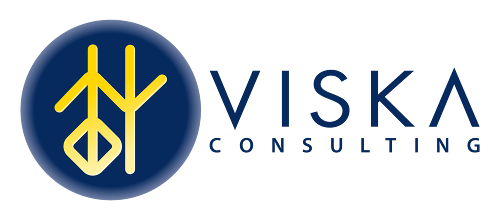As part of our Framework Series – we are looking at different models for decision making. In our previous article about the OODA Loop, we discussed how Observe, Orient, Decide, and Act can work for your business. In our post on the WRAP Framework, we looked at Widening Options, Reality Testing We have also taken a look at Sakichi Toyoda’s 5 Whys. Now, we look at the Cynefin Framewok.
The ability to make effective decisions in complex and uncertain situations is more critical than ever. Enter the Cynefin Framework, a model developed by Dave Snowden and Rob England, which has emerged as a beacon for leaders and managers navigating these challenging waters. This innovative framework offers a pragmatic approach to decision-making, categorizing problems into distinct domains and suggesting appropriate actions for each. This article delves into the origins, structure, and applications of the Cynefin Framework, offering insights into its profound impact on modern management and decision-making strategies.
Origins and Development of the Cynefin Framework
The Minds Behind the Model
The Cynefin Framework was first introduced by Dave Snowden in 1999 while working for IBM Global Services. Snowden, a thought leader in knowledge management and complexity science, collaborated with Rob England, an expert in IT service management, to develop and refine the framework further. Their collective expertise in complex systems, organizational management, and cognitive science laid the foundation for what would become a vital tool in the arsenal of modern business strategy.
Evolution of the Concept
The framework’s inception addressed the need for a more nuanced approach to managing and leading in diverse and unpredictable environments. Traditional linear and mechanistic models were proving inadequate in handling the complexities of the modern world. The Cynefin Framework introduced a new way of thinking that acknowledged the unpredictability and complexity inherent in many situations. It was designed not just as a tool for problem-solving but as a lens through which leaders could better understand their environment and adapt their decision-making accordingly.
The name ‘Cynefin,’ a Welsh word meaning ‘habitat’ or ‘place,’ reflects the framework’s emphasis on understanding the context in which decisions are made. Over the years, the Cynefin Framework has evolved, incorporating feedback from its widespread application across various sectors, from business to healthcare and public administration. Its adaptability and relevance to different contexts have solidified its place as a cornerstone in contemporary management theory and practice.
Understanding the Cynefin Framework
The Five Domains of Decision-Making
The Cynefin Framework categorizes problems and decision-making scenarios into five distinct domains: Simple (or Obvious), Complicated, Complex, Chaotic, and Disorder. Understanding these domains is crucial for applying the framework effectively:
- Simple (Obvious): Clear cause-and-effect relationships exist, and decisions are straightforward. Best practice is applicable.
- Complicated: Cause-and-effect relationships are discoverable but not immediately apparent. Expert analysis and good practice are required.
- Complex: Cause-and-effect relationships are only clear in hindsight. This domain requires probing, sensing, and responding.
- Chaotic: There are no clear cause-and-effect relationships. Immediate action to establish order and seeking novel practices is necessary.
- Disorder: This is the state of not knowing which of the other four domains applies. Identifying the correct domain is the primary focus.
Application in Decision-Making
Each domain requires a different approach to decision-making:
- In the Simple domain, one can rely on established processes and rules.
- In the Complicated domain, expert advice and analysis are crucial.
- In the Complex domain, experimentation and pattern recognition guide decision-making.
- In the Chaotic domain, rapid action and leadership are necessary to stabilize the situation.
- In the Disorder domain, the goal is to diagnose the situation and move it into one of the other domains.
Practical Applications in Business and Management
Strategic Planning and Problem-Solving
The Cynefin Framework has proven particularly useful in strategic planning and problem-solving. Leaders can tailor their strategies by identifying which domain a particular problem resides in. For instance, in a Complex scenario, a company might adopt an experimental approach, testing various methods to see what works, whereas, in a Complicated scenario, they might lean more on expert analysis and data.
Organizational Change and Development
The framework also aids in managing organizational change. For instance, understanding whether a change initiative falls into the Complex or Complicated domain can significantly influence how change is communicated and implemented. In Complex domains, an iterative, adaptive approach might be more effective, whereas in Complicated domains, detailed planning and expert input might be more appropriate.
The Framework’s Impact on Leadership and Decision-Making
Adapting Leadership Styles
The Cynefin Framework has significant implications for leadership. Leaders can adapt their style and approach by understanding which domain a particular issue falls into. For example, in the Simple domain, a directive style might be most effective, while in the Complex domain, a more facilitative and collaborative approach could yield better results. This adaptability is crucial for effective leadership in a variety of situations, ensuring that responses are tailored to the nature of the challenge faced.
Decision-Making in Complex and Chaotic Contexts
In Complex and Chaotic contexts, where traditional, linear approaches to decision-making are insufficient, the Cynefin Framework provides a guide for navigating uncertainty. In these domains, leaders are encouraged to experiment, take action, and learn from the outcomes rather than relying solely on analysis or established best practices. This can lead to more innovative solutions and a greater capacity to respond agilely to unexpected challenges.
Case Studies: Cynefin Framework in Action
Business Innovation in a Complex Domain
A multinational corporation used the Cynefin Framework to navigate the launch of a new product line. Recognizing the initiative as a Complex problem, the company adopted a strategy of iterative development and continuous feedback, rather than a traditional, linear approach. This allowed for rapid adaptation based on customer responses, leading to a more successful product launch attuned to market needs.
Crisis Management in a Chaotic Domain
A government agency applied the Cynefin Framework during a natural disaster to manage its response. Understanding that they were operating in a Chaotic domain, the agency focused on taking decisive action to stabilize the situation, such as providing immediate relief to affected areas. Once stability was achieved, efforts shifted to more strategic, long-term recovery plans.
Organizational Restructuring in a Complicated Domain
A healthcare organization facing operational inefficiencies used the Cynefin Framework to guide its restructuring process. By categorizing the problem as Complicated, the organization sought expert advice and conducted a thorough analysis of its operations. This led to informed changes that improved efficiency without disrupting patient care.
Challenges and Critiques of the Cynefin Framework
Navigating the Framework’s Complexities
While the Cynefin Framework is a powerful tool for understanding decision-making contexts, it has challenges. One critique is that the framework requires a significant level of interpretation and judgment, which can be subjective. This subjectivity can lead to misclassification of problems, potentially resulting in inappropriate strategies.
Addressing Limitations
To mitigate these challenges, users of the framework need to have a deep understanding of its principles and a willingness to adapt as situations evolve. Training and experience in applying the framework can help reduce the risks of misinterpretation. Moreover, using the Cynefin Framework in conjunction with other decision-making tools and approaches is beneficial to provide a more rounded perspective.
Conclusion
Harnessing the Cynefin Framework for Enhanced Decision-Making
The Cynefin Framework, developed by Dave Snowden and Rob England, offers a sophisticated approach to categorizing problems and tailoring decision-making strategies accordingly. Its application spans various domains, from business strategy and leadership to crisis management and organizational change. By understanding and applying this framework, leaders and managers can make more informed decisions, navigate complexity more easily, and lead their organizations more effectively in an ever-changing world.
Explore the Cynefin Framework with Expert Guidance
Are you looking to enhance your decision-making processes and lead with greater insight and confidence in complex environments? Delve deeper into the Cynefin Framework and discover how it can transform your approach to challenges and opportunities. For expert guidance on applying this dynamic framework to your unique context, consider reaching out to specialized consultants who can provide tailored training and strategic advice.
Empower your leadership and decision-making with the Cynefin Framework. Contact us today for specialized consultancy services and take the first step towards mastering complexity in your organization.

